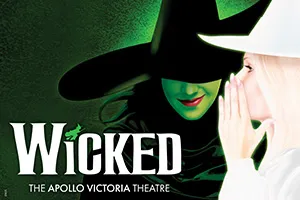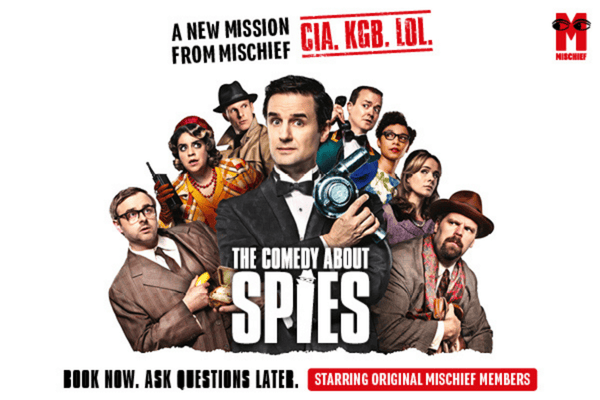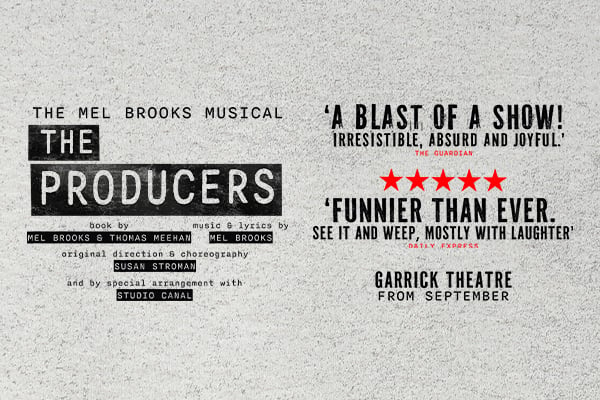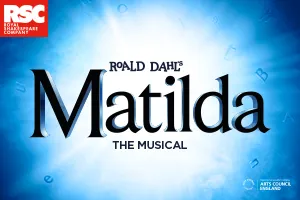Artistic Director and Founder of London Classic Theatre, Michael Cabot opened the company’s touring production of Joe Orton’s
A production packed with energy and pace
With a seating capacity of around 900 the ornate, late 19th century theatre is somewhat oversized for Orton’s last play and with the stalls filled to only half capacity, at the most, the proscenium stage seemed rather distant for a work that benefits from a degree of intimacy. Bek Palmer’s set is a spectacular work of art, with hints of imagery from Monty Python’s opening sequence, and Daliesque surrealism. It’s a stunning abstract sight in vibrant colours to be greeted by on entering the auditorium. Then the realisation sinks in that it is detached from the late 1960s realism of a psychiatrist’s office that the play requires.
Orton described the play as a ‘farce’, a modus operandi that runs throughout and reaches a fast-paced, rapidly-changing climax in its bonkers denouement. It also fits into the category of black comedy. The essence of both genres lies in the actors believing that the bizarre behaviour they display is normal; that tangential ripostes are part of normal conversation and that their skewed perspectives on everyday life are only to be expected.
John Dorney sets the tone as Doctor Prentice as he attempts to seduce his prospective new secretary, Geraldine Barclay, as part of the interview process that requires the removal of clothes. Alana Jackson,gives a suitably compliant and gullible performance. His scheme is foiled with the entrance of Mrs Prentice. Holly Smith captures the excesses of this gushing and overwhelming character who is being willingly seduced and less comfortably blackmailed by Nicholas Beckett, a situation that gives Alex Cardall the opportunity to display menacingly lustful and criminal intentions. The plot and multiple subplots become increasingly complex as the play progresses. Next, Doctor Rance, the Government Inspector appears to investigate reported goings-on at the clinic and gather material for his latest book. Jack Lord is appropriately dour in this role and also revels in revealing the rather suspect mind and interests of the Doctor. "The final chapters of my book are knitting together: incest, buggery, outrageous women and strange love-cults catering for depraved appetites. All the fashionable bric-a-brac." The clinic provides plenty of material. Eventually the police become involved and Jon-Paul Rowden gives a classic performance of the none-too-bright Sergeant Match, steeped in the style of language used only by members of the force. By then the question as to who is sane and who is mad and the extent to which the inmates have taken over the prison looms large.
It’s a production packed with energy and pace, but there is a sense that it’s early days for this show and that a greater degree of internalisation of the characters might be forthcoming along with a heightened awareness of their stakes in the proceedings that takes it above the level of a ludicrous and very funny romp.
It’s hard to appreciate the nature of the play as it would have appeared to audiences at its first performance in March 1969, some eighteen months after Orton’s death; shocking, radical, perhaps obscene, an affront to the establishment and a challenge to the albeit slowly changing morality of the day. Themes such gender identity, sexual activity and adultery are now commonplace, as is the lack of reverence for and questioning of those in authority, but that was not the case over half a century ago.
Orton’s writing was groundbreaking in its day and still ranks as amongst the finest in its class. It’s a joy to see that it’s being kept alive for today’s audiences.


















